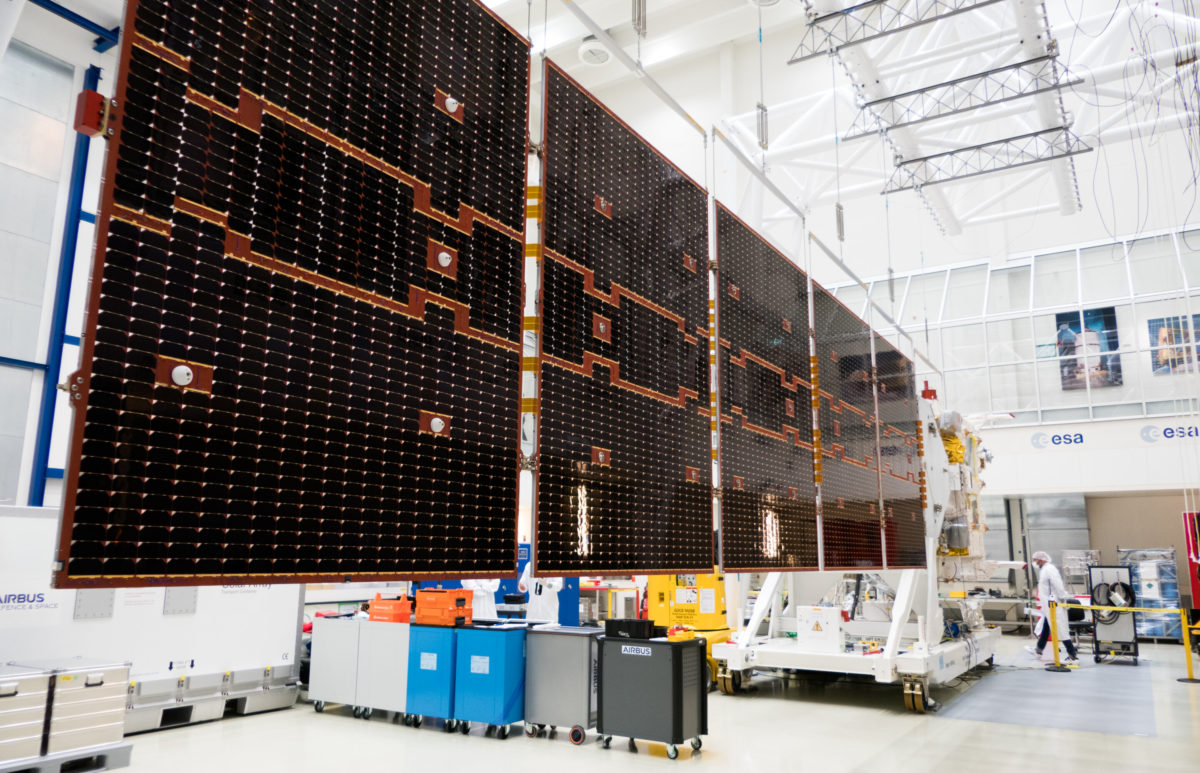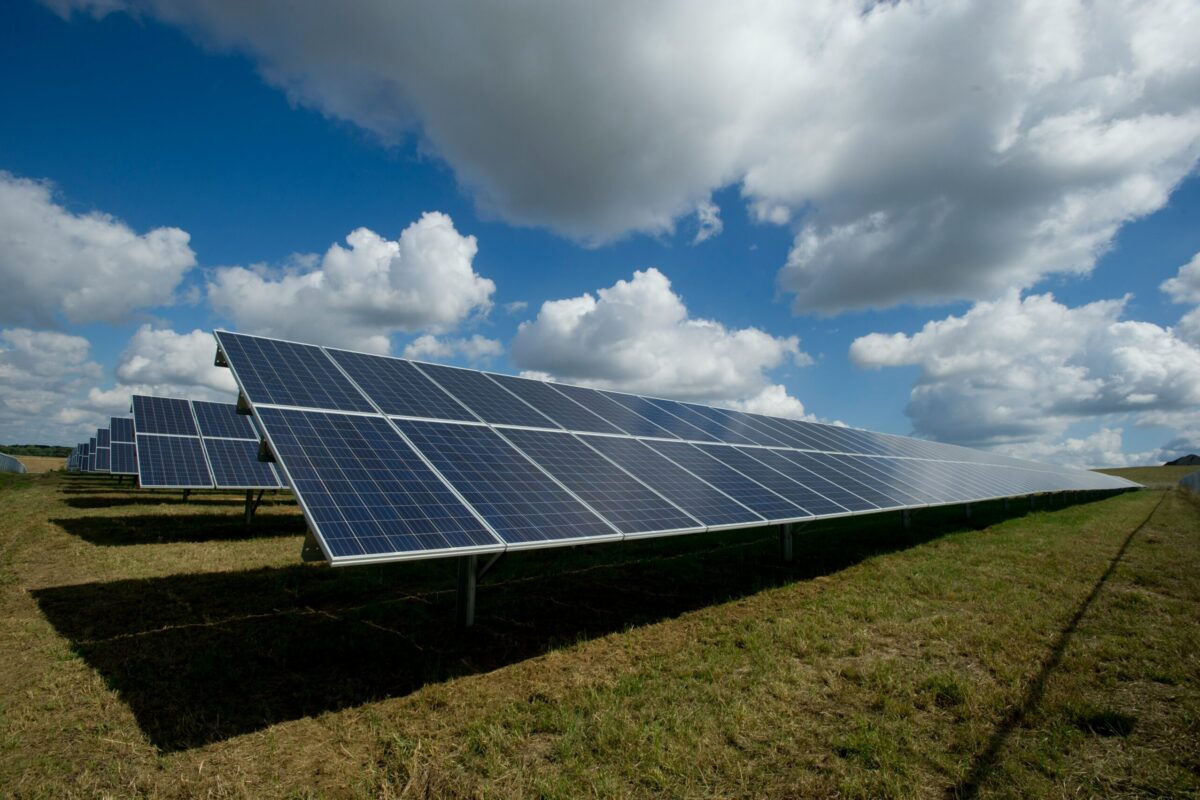EarthCARE is a mission of the European Space Agency (ESA) intending to find answers to questions about the role that clouds and aerosols play in reflecting incident solar radiation back out to space and also trapping infrared radiation emitted from Earth’s surface.
In preparation for launch, engineers unfolded the satellite’s five-panel solar wing to test it before it’s sent into space.
While the suite of instruments is impressive, the single 36-foot solar wing, which in orbit will be outstretched at the rear of the satellite, is essential as it will provide the power needed for the mission.
“We are extremely happy to say that the solar wing deployment test went very well. The timely and complete deployment of the large solar wing soon after launch is crucial to the mission,” said ESA’s Mehrdad Rezazad.
To perform the test, each of the five panels were supported by wires. After the launch, the five panels that make up the wing will be held together by ties, which will be cut by a set of thermal knives, thus unfolding the wing behind the satellite.
With the first solar array deployment test successfully completed, the various vibration and thermal-vacuum tests are next.
This content is protected by copyright and may not be reused. If you want to cooperate with us and would like to reuse some of our content, please contact: editors@pv-magazine.com.









By submitting this form you agree to pv magazine using your data for the purposes of publishing your comment.
Your personal data will only be disclosed or otherwise transmitted to third parties for the purposes of spam filtering or if this is necessary for technical maintenance of the website. Any other transfer to third parties will not take place unless this is justified on the basis of applicable data protection regulations or if pv magazine is legally obliged to do so.
You may revoke this consent at any time with effect for the future, in which case your personal data will be deleted immediately. Otherwise, your data will be deleted if pv magazine has processed your request or the purpose of data storage is fulfilled.
Further information on data privacy can be found in our Data Protection Policy.